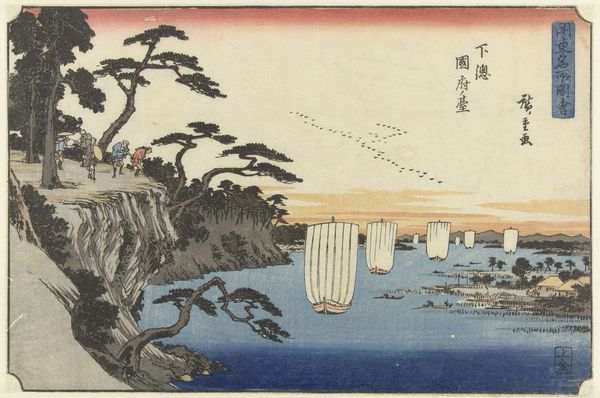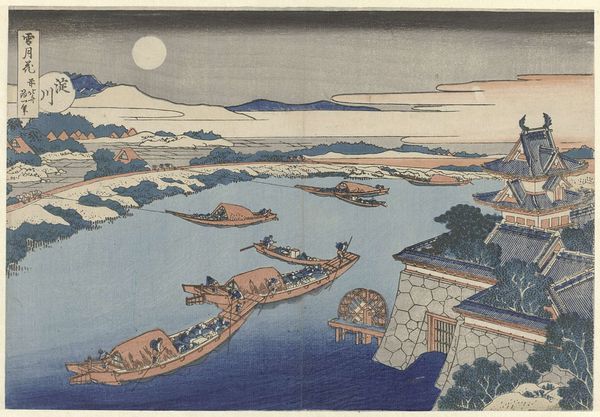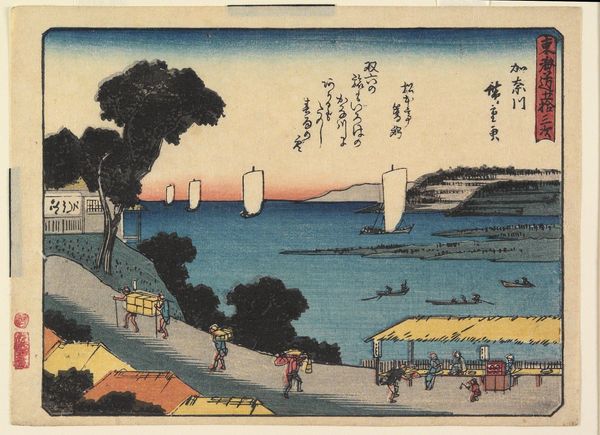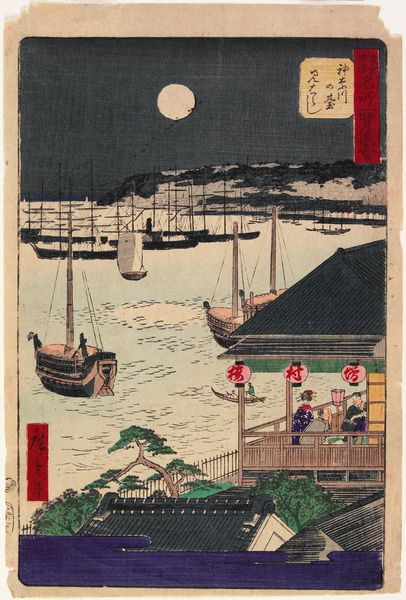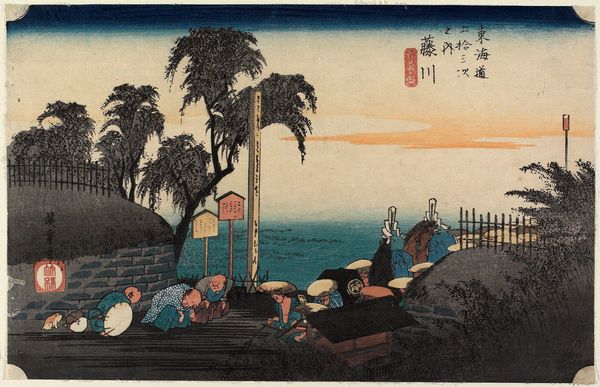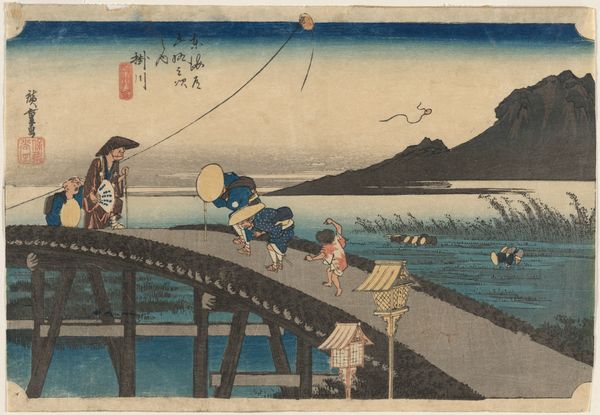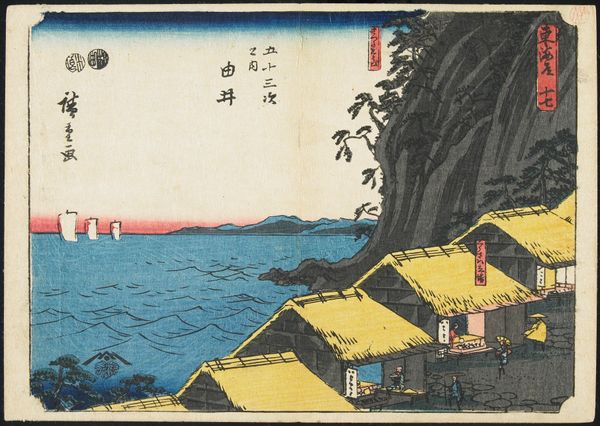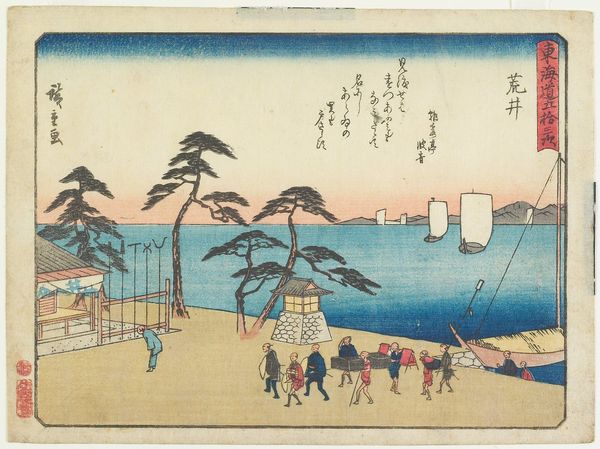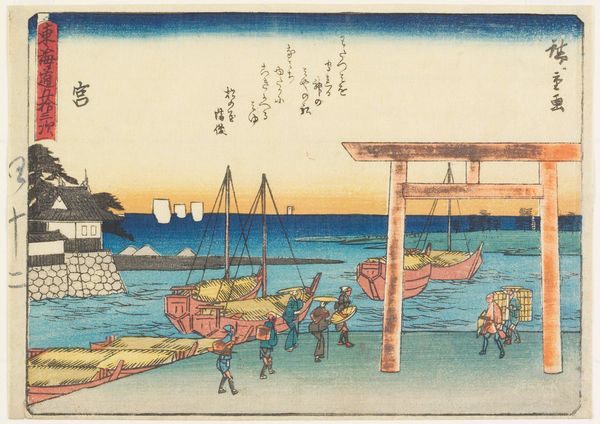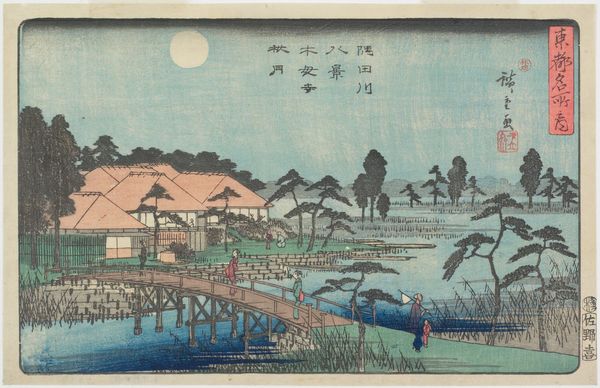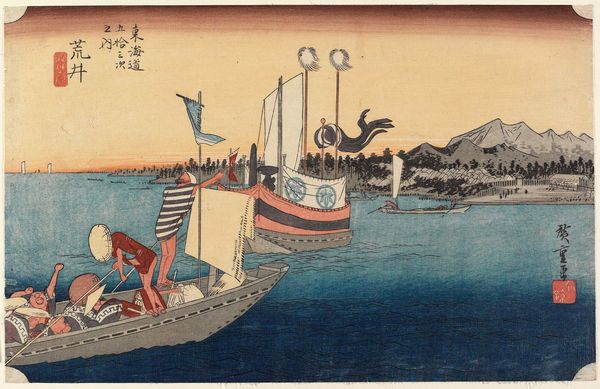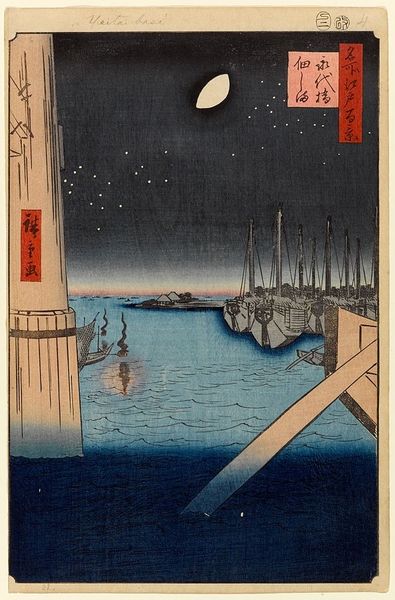
print, ink, woodblock-print
# print
#
asian-art
#
landscape
#
ukiyo-e
#
ink
#
woodblock-print
Dimensions: 8 11/16 × 11 1/16 in. (22 × 28.1 cm) (image, sheet, uchiwa-e)
Copyright: Public Domain
Editor: So, this is "Nojima," a woodblock print made by Utagawa Hiroshige sometime between 1843 and 1846. It's so serene. The water is this unreal blue and there are tiny figures doing everyday things. What do you see in this piece, beyond just a pretty scene? Curator: Beyond the beautiful landscape, I see a layered narrative built through potent visual symbols. The moon, for example, positioned high in the sky, isn’t merely celestial; it’s a symbol of reflection, of cyclical time, and perhaps even enlightenment within the Buddhist tradition. Do you notice how its light touches almost every part of the scene? Editor: Now that you mention it, the moonlight reflecting on the water connects the foreground to the background, linking the working people to the distant islands and the overall vastness. Curator: Precisely! And consider the figures themselves. They're engaged in labor, yes, but their smallness against the grand backdrop speaks to the human relationship with nature - a common theme in Ukiyo-e. They’re not dominating the landscape, but rather existing in harmony with it. This resonates deeply within Shinto beliefs of respect for nature's spirits. What emotional tone does this evoke for you? Editor: A kind of peaceful acceptance, I think. It's not romanticizing labor, but it presents a balanced perspective. Curator: Indeed. And notice how the boats aren't just static objects, but convey the constant flow of commerce and connection between communities, echoing the transient nature of life itself as understood in Buddhist philosophy. The symbols all weave together a story of interconnectedness and quiet resilience. Editor: That's fascinating! I’ll definitely see Hiroshige's work differently from now on, paying attention to all the hidden meanings within the image. Curator: And hopefully, understanding how these visual symbols connect to larger cultural narratives.
Comments
minneapolisinstituteofart almost 2 years ago
⋮
The four islands identified in the title cartouche of this print are located off the shore of Kanazawa Beach, today part of Yokohama City. As seen here, it was a quiet fishing village in Hiroshige's time. While the women on the beach were busily gathering seashells, the full moon rises in the sky. The afterglow of the sunset that remains above the horizon, however, suggests the evening is still young. Two fishing boats are shown making their way back to port before the last light of day disappears.
Join the conversation
Join millions of artists and users on Artera today and experience the ultimate creative platform.
